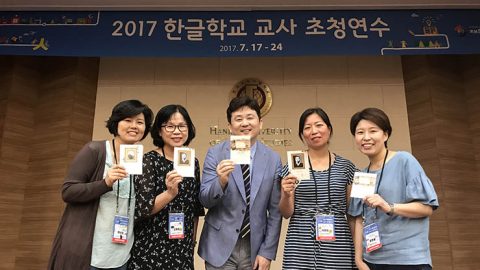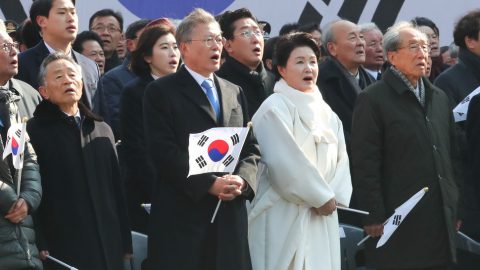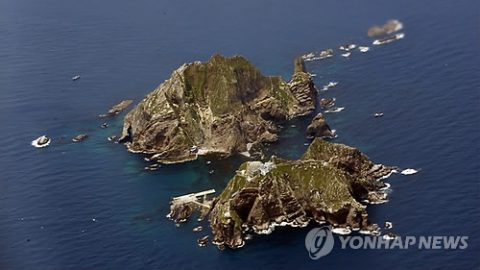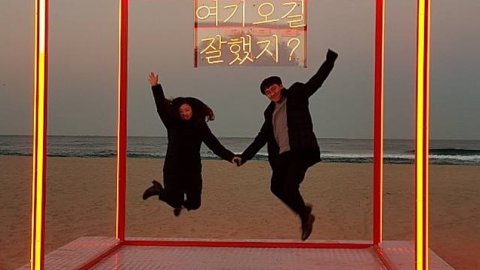Scholar couple refers to old maps to support the use of the East Sea over the Sea of Japan
By Han Seung-dong, senior staff writer
“When a sea is shared by several countries, naming that sea after just one of those countries is unlikely to win the approval of the other countries in the area. It’s not likely that the other coastal states in the Mediterranean would agree if the Mediterranean Sea were called the Italian Sea or the French Sea.”
Seo Jeong-cheol, 77, founding director of the Society for East Sea Research and professor emeritus at the Hankuk University of Foreign Studies (HUFS), taught for 34 years at his alma mater of HUFS after receiving a doctorate in French language and literature from the Sorbonne in Paris.
In 1966, when Seo was nearing the end of his seven years of study in France, he happened to notice the words “Mer Oriental” (French for “East Sea”) on a globe in the drawing room of Louis XIV at Versailles. This discovery was a watershed moment in his life. At that moment, he shouted, “Yes, that’s it!” From then on, he studied the French language during the day and ancient maps about the East Sea at night.
After marrying Kim In-hwan, 76, who was also a literature doctoral student in French literature at the Sorbonne, in 1968, the two took up the East Sea as their evening course of study. “Korea and Old Western Maps,” released in 1991, was written by Seo alone, while “War on the Map,” which came out in 2010, and “Tha truth of the East Sea and the Sea of Japan,” published recently by Gimmyeong Publishers, were written by both Seo and Kim.
“I was possessed by the ghost of the East Sea and dragged beneath the waves. In the morning, I studied my major and prepared for my classes. After work, I went up to the second floor and laid the old maps on the table. Until the early hours of the morning, I used my imagination to travel back through hundreds of years of time and space and enter the mind of the mapmaker.”
Even after returning to Korea, Seo traveled to Europe each year in search of old maps that mentioned the East Sea, and his area of interest expanded to the Korean peninsula and the boundaries of its territory.
When Seo found a useful map, he would discuss the issue by phone with his wife in Seoul. When he discovered “Voyage De La Perouse Autour du Monde,” which contained ancient maps about the East Sea, his wife told him to reserve the book and pay for it later. Even though the price of the book was equivalent to his annual salary, it was worth buying, she said.
In 2004, the couple donated all of the old maps that they had collected for dozens of years at their own expense – including the rare map “Theatrum Orbis Terrarum” by Joan Blaeu – to the Seoul Museum of History.
Tha truth of the East Sea and the Sea of Japan
Whose sea is the East Sea?
The sea belongs to nobody. Seo offers two basic reasons why the East Sea should not be called the Sea of Japan. One reason is that the people on the Korean Peninsula and Manchuria called it the East Sea for 2,000 years. Another is that the word “Sea of Japan” was not used even in Japan before the Meiji Restoration. When the International Hydrographic Organization (IHO) registered the term “Sea of Japan,” Korea was under Japanese colonial occupation and did not have a chance to express its opinion. The name “East Sea” has 2,000 years of history; the name “Sea of Japan” only 100, Seo says.
“The expression ‘East Sea’ appears in the description (in 59 B.C.) of the dynasty of King Dongmyeong in the Samguk Sagi, or History of the Three Kingdoms. Even Chinese classics such as ‘Book of the Later Han’ and ‘Classic of Mountains and Seas’ record that peoples in Manchuria such as the Yilou, Sushen, Mohe, and Jurchen referred to the body of water as the ‘East Sea.’ This is how we know that East Sea is not just ‘eastern sea,’ used in many other parts of the world to refer to a body of water in the east, but is rather a proper name referring to a specific sea in East Asia that was expressed for millennia with the Chinese characters ‘東海.’”
Seo argues that the Japanese did not really start using the word “Sea of Japan” until after the Russo-Japanese War ended in 1905. Until the Meiji Restoration in 1868, the Japanese called the East Sea the ‘North Sea.’ The name ‘Sea of Japan’ appeared for the first time in “Kunyu Wanguo Quantu” (meaning “Complete Geographical Map of all the Kingdoms of the World”), which was drawn by the Western missionary Matteo Richi, who went to China in 1632. Japan offers this as important grounds for supporting usage of the term “sea of Japan,” but in fact the first time that the term was used inside Japan was the 1802 “Ine Takago” map.
Japanese articles – such as “The Origin and Function of Geographical Names,” written by scholars from Kyoto University in support of the term “Sea of Japan” – deliberately ignore maps dating before the 19th century that refer to “East Sea” or “Joseon Sea,” which are far more numerous than maps that refer to the “Sea of Japan.”
The name “East Sea” – which Seo likes to describe as “stolen” – is also closely connected with the issue of Dokdo. “Japanese say that Takeshima is in the Sea of Japan, so why would it be a Korean island? They think it is only natural that it belongs to Japan,” Lee said. Takeshima is the Japanese name for Dokdo.
Lee, who advocates writing both “East Sea” and “Sea of Japan,” also addressed concerns that, even if both are written, people around the world are more likely to use “Sea of Japan” than “East Sea,” which sounds more like a common noun. “When there is a dispute about the name of a body of water, the IHO advises that both names be used as a first step. If the problem continues, the organization asks the countries involved to agree about a third name that can be used. Practically speaking, we should be trying to use both names for now,” Lee said.
Lee said that, while an increasing number of countries and regions have been writing “East Sea” alongside “Sea of Japan” recently, it is too soon to be optimistic. “Since Japan was one of the founding countries of the IHO, it contributes a lot of funding to the organization and its opinions are heeded. Another disadvantage is that the major countries in the organization are all former colonial powers, like Japan. While recently Korea has become the 12th largest contributor to the organization, it still has a long way to go compared to Japan, which has been tenaciously and systematically treating the issue as a definite national project,” Lee said.
But Seo also had this to say. “When I began, I was motivated by shock and anger, but through my research I discovered that I should not be unilateral and unconditional in my support of the Korean position. The objective of our study of ancient maps is to correct false impressions and ultimately to bring about harmony.” Kim’s opinion was the same as her husband. They make a good match.
Please direct questions or comments to [english@hani.co.kr]
[english.hani.co.kr] | Original News @ HERE
Date : 2014/08/11




